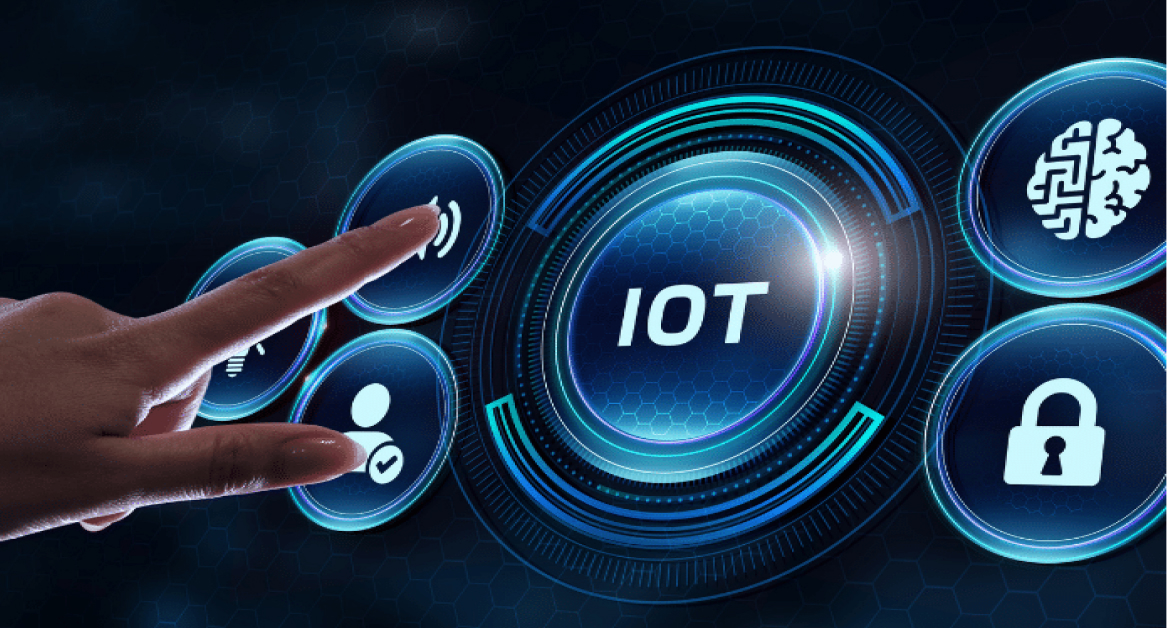In an interconnected and remote working world, ensuring the security of your enterprise’s digital assets has become more critical than ever. With employees accessing company data from various devices, from everywhere, the potential entry points for cyber threats have multiplied.
This calls for a comprehensive approach to safeguarding your organization’s endpoints, and that’s where endpoint security management comes into play.
Understanding endpoint security management
Endpoint security management refers to the strategies and tools employed to protect the various endpoints within your enterprise networks. These endpoints include various devices, such as computers, phones, and IoT devices.
What constitutes an endpoint?
Endpoints, in the context of cybersecurity, are essentially the points of access to your enterprise network. They are the devices or servers that connect to your network and can be vulnerable to cyber threats. These include:
1. Desktops and laptops: The most common and familiar endpoints in any organization. Employees use these devices for everyday work, making them essential yet susceptible targets for cyberattacks.
Read more about how to secure the endpoint of MacOS.
2. Mobile devices: With the rise of remote work and the Bring Your Own Device (BYOD) trend, mobile devices such as smartphones and tablets have become integral to business operations. However, they also pose security challenges that need addressing. That’s why it’s essential to use reliable antivirus for Android, as recommended by Cybernews, to protect your mobile devices from malware and other threats.
3. Servers: These powerful machines often host critical data and applications, making them attractive targets for cybercriminals seeking unauthorized access.
4. IoT devices: The Internet of Things (IoT) has brought forth a new category of endpoints, including smart appliances, sensors, and even security cameras. While they enhance convenience, they can also introduce vulnerabilities if not properly secured.

Common types of endpoints and their vulnerabilities
Each type of endpoint comes with its own set of vulnerabilities that require vigilant management:
1. Desktops and laptops: Users may unknowingly download malicious files or fall victim to phishing attacks.
2. Mobile devices: Mobile apps can hide malware, and insecure Wi-Fi connections can expose sensitive data.
3. Servers: Weak passwords or outdated software can leave servers open to exploitation.
4. IoT devices: These devices often lack robust security measures, making them easy entry points for cybercriminals.
Let’s continue our journey to uncover why endpoint security management is crucial in today’s digital age and what key components contribute to its effectiveness.
The evolution of cyber threats and endpoint vulnerabilities
Cyber threats have been around since the early days of the internet. However, their nature and scale have undergone significant transformations over the years. In the past, threats were simple, like viruses and worms that spread through email attachments or infected software. Users could largely avoid these threats through cautious behavior and the use of antivirus software.
How cybercriminals exploit endpoint vulnerabilities
As cybersecurity measures improved, cybercriminals adapted. They began to target endpoints more systematically, recognizing that compromising a single device could provide access to an entire network. This shift in strategy led to the development of more sophisticated attack vectors.
Take a look at some real-world examples of endpoint attacks.
4 shocking endpoint security breaches that happened
1. Stuxnet Worm (2010)
Stuxnet was a highly sophisticated worm designed to target supervisory control and data acquisition (SCADA) systems, particularly those used in Iran’s nuclear program. It demonstrated the potential for state-sponsored cyberattacks with real-world consequences.
2. Yahoo Data Breaches (2013-2016)
Yahoo, a major email service provider, experienced two significant data breaches during this period. In 2013 and 2014, cybercriminals stole data from over a billion user accounts, including email addresses and encrypted passwords. These breaches underscored the need for strong password practices and the importance of promptly notifying users about security incidents.
3. WannaCry Ransomware (2017)
This ransomware attack spread like wildfire, encrypting data on affected computers and demanding a ransom for decryption keys. It exploited a vulnerability in Microsoft Windows, emphasizing the importance of regular software updates and patch management.
4. Equifax Data Breach (2017)
In 2017, Equifax, a credit reporting company, suffered a massive data breach. Hackers gained access to sensitive personal information, including Social Security numbers and credit card details, of nearly 147 million people. This breach highlighted the importance of robust data protection measures and the need for companies to secure the personal data they collect.
Trends in endpoint attacks
Today, endpoint attacks encompass a wide range of techniques, including:
- Advanced persistent threats (APTs): APTs are long-term, highly targeted attacks that often go undetected for extended periods. They aim to compromise endpoints to gain access to sensitive data.
- Zero-day exploits: These attacks take advantage of vulnerabilities unknown to software vendors. Zero-day exploits can be especially dangerous because there are no available patches to mitigate the risk.
- Fileless malware: This type of malware operates in memory and leaves no trace on the infected endpoint’s disk, making it difficult to detect using traditional antivirus software.
- Ransomware: Ransomware attacks remain a significant threat, with attackers encrypting files and demanding ransoms for decryption keys.
- Phishing attacks: Phishing attacks are well-known and highly effective online scams. Bad actors send fake emails or set up fake websites that look real to trick people into giving away their personal information, like passwords or credit card numbers.
Why endpoint security management is important
Given the ever-evolving nature of cyber threats, endpoint protection is not merely a good practice; it is an absolute vitality. Here are compelling reasons why it should be a top priority for any organization:
- Comprehensive threat protection:
Endpoint security offers multi-layered defense, guarding against a wide spectrum of threats, from malware to phishing, ensuring robust protection against diverse threats.
- Real-time monitoring:
It provides continuous real-time monitoring of endpoint devices, enabling early detection of suspicious activities or potential breaches, and bolstering your organization’s security posture.
- Data security
Robust data loss prevention tools safeguard sensitive data, preventing compromise or leakage, and preserving the integrity and confidentiality of vital information.
- Application control
Endpoint security empowers organizations to control which applications run on their devices, reducing the risk of unauthorized or malicious software infiltrating your network.
- Centralized management:
Offering the convenience of centralized management, it allows IT teams to efficiently deploy updates, patches, and security policies across all endpoints, ensuring consistency and compliance.
- Rapid threat response:
In the face of security incidents, endpoint protection provides the necessary tools for swift threat detection and response, minimizing potential damage and disruption.
Key components of endpoint security management
Effective endpoint security management software usually comes with a set of tools and strategies that collectively fortify an organization’s digital perimeter. Let’s delve into the key components that constitute a robust endpoint security management framework.
Antivirus and anti-malware solutions
At the core of endpoint security are antivirus and anti-malware solutions. These tools scan files and applications for malicious code, quarantining or removing threats. Modern antivirus solutions utilize heuristics and machine learning to identify previously unseen threats.
Firewall and intrusion detection/prevention systems
Firewalls are like security guards for networks, checking and controlling traffic based on specific rules. Intrusion detection and prevention systems (IDPS) go further by identifying and mitigating potential threats in real time.
Device and application control mechanisms
Control over devices and applications is essential for maintaining a secure environment. Endpoint security management allows administrators to dictate which devices can connect to the network and which applications are permitted to run on endpoints.
Data encryption and data loss prevention (dlp) tools
Sensitive data should always be encrypted to prevent unauthorized access. DLP tools help organizations identify and safeguard sensitive data, ensuring it doesn’t leave the network without proper authorization.
Patch management and vulnerability assessment
Software vulnerabilities are prime targets for cyberattacks. Effective patch management ensures that all endpoints receive timely updates and security patches. Vulnerability assessments help identify weak points in the system that require attention.
User authentication and access control
Access control is fundamental to endpoint security. It ensures that only authorized users can access specific resources. Multi-factor authentication (MFA) adds an extra layer of security by requiring multiple forms of verification
Get the endpoint security’s peace of mind
Endpoint security isn’t just a security measure; it’s a proactive approach to safeguarding your enterprise against the ever-evolving landscape of cyber threats. Now that we’ve known the components of endpoint security and why it’s crucial for your business, it’s time to take action.
Esevel provides strong and reliable security for your organization in a world with high stakes and constant cyber threats. Choose a secure solution that helps your business succeed in the new era, not just for endpoint security. Book a demo with Esevel.







